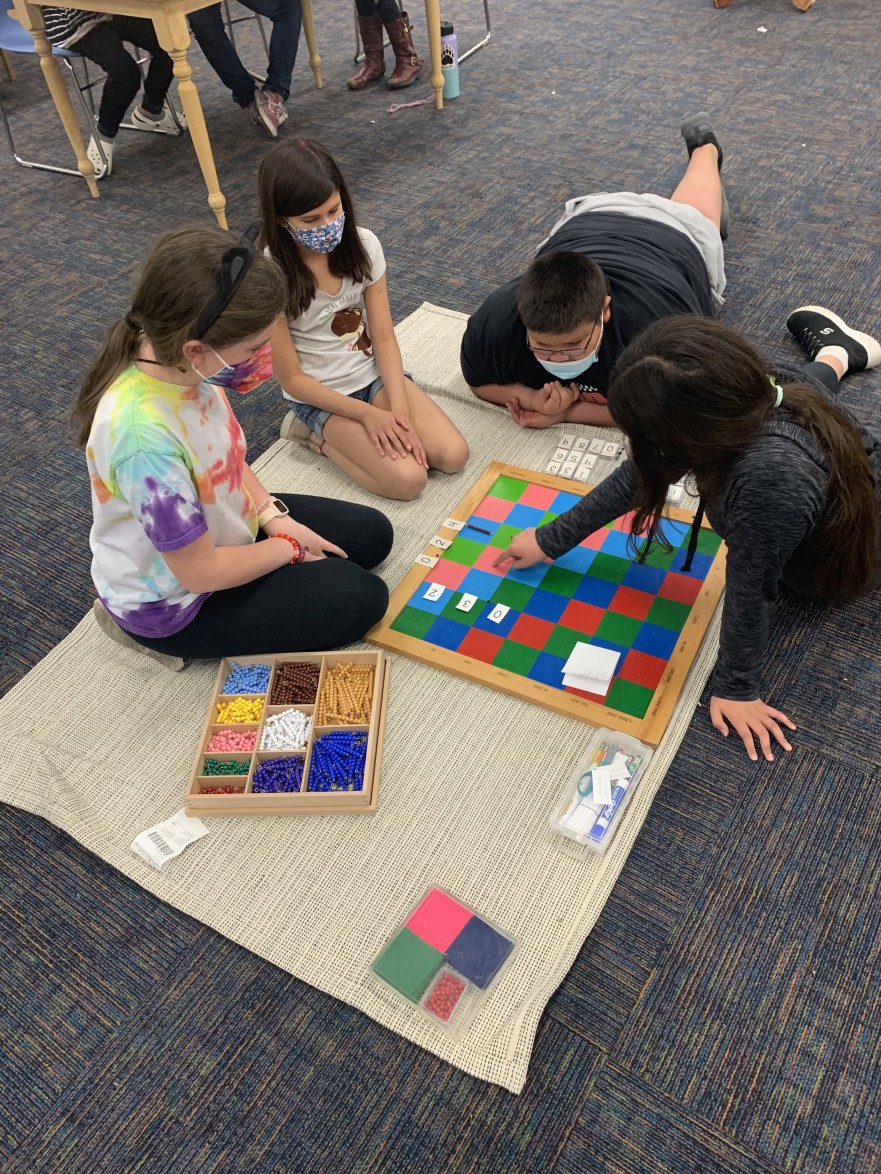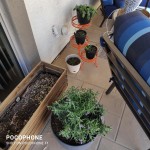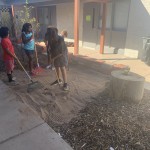August 3rd was here! Our first day back and I already had two Montessori Student Teachers observing our class. They had a specific request to see how to start the first day of school. I gave them some history of our class and the preparations we made on the last day of school in May, along with my rationale. For them, this was an opportunity to observe the potential of a public Montessori classroom.
A Pretty Typical Start (for a Montessori classroom)
The day began as I imagine most first days were beginning across the state. At 8:35, students came in and were happy to reconnect with their peers. Some still chose to wear masks and some did not based on their comfort levels. They asked where to put their things and were eager to tell me about their summer. Returning students were directed to place their supplies in their cubbies. New 4th graders were asked to choose any seat and keep their things with them. After taking attendance, we resumed our morning routine of affirmations. The 4th graders were then invited to choose a cubby and place their items inside.
Although the 4th graders knew at least a few of their new peers, I could tell they still felt a little apprehensive. I asked the 5th and 6th graders to invite a 4th grader they knew to their table and help guide them through the day. This paired every new student with a veteran that showed them the ropes. We took 20 minutes to share summer experiences with friends. Since the 4th graders were paired with familiar faces, they were able to jump right into this experience. By the end of the 20 minutes, the class felt like an established unit.
Now that the students were comfortable, we had a whole group conversation about the new year, class routines, and academic and social expectations. Our school has community schools we partner with in case of an off-campus emergency. We went on a community walk to one of the schools to remember the route and to burn off some access energy. By the time we returned to campus, they were truly ready to settle down.
On Your Mark, Get Set, Go!
When we returned, it was time to choose our first work for the year. The children cheered and clapped with excitement! I heard statements such as “Finally!” and “I have been waiting all day for this.” 5th and 6th were invited to retrieve the work log they had prepared on the last day of school while I passed out the 4th graders’ logs. 5th and 6th were invited to get the materials they needed and were free to work until our lunch break. Some chose to work alone and others with a partner or small group. Some chose to work at a table, some on the floor, and others outside. I assisted the 4th graders in securing their materials and helped them get set up to start their work. They also made work arrangement choices like their older peers.
Once the students were engaged in their works, I had time to observe them. I took note of how they had grown and matured (or not) over the summer. I observed how they worked on the lessons they had previously identified, jotted down who retained information and who needed a review. I noticed if they went to their notes or not. I observed if and how they transitioned to another work when done with the present one, if they needed redirection, and if they needed guidance. Then, it was time for a much needed lunch and recess break.
The PM Work Cycle
After lunch and recess, we returned to our work in class. Students continued with their preselected works. Their active involvement in their own work allowed me to give lessons and reviews based on the observations I made that morning. With one student, I reviewed how to use a specific word study material and how to check her work. I gave a small group review lesson on long division with regrouping. I made some plant observations with a group and linked them to the corresponding nomenclature.
Another group had a review lesson on sentence analysis. There was a 1:1 lesson on ratio and proportion, a small group grammar lesson on prepositions, and a small group lesson on addition and subtraction in word stories. There were many opportunities to reinforce classroom procedures for using and returning restored materials. Also, we reviewed Grace and Courtesy lessons as needed like when and how to ask me questions, how to answer the class phone, how to greet and assist a visitor, and how to ask a peer for help. Before we knew it, it was time to wrap up and end the day. The students restored the classroom environment, gathered their belongings, and went home.
“Wait…this was your FIRST day of school?”
After all the students left for the day, I checked in with the observing student teachers. They said they were surprised that so much happened in one day. They also commented that it felt like they had been in school for weeks, and not their first day. When they asked me how we were able to achieve this level of productivity, I reminded them that we prepared for this day on the last day of school. My hope was that actively linking the students by helping them prepare the environment and their learning would cut down on transition time and help them get right into work.
I took full advantage of our 3-year learning cycle which eliminated the need for returning students to learn new routines. Although the 4th graders were new to our class, they were not new to the Montessori Elementary classroom. They were familiar with many materials from their Lower Elementary experience. This, along with linking the 4th graders to our class before summer break and pairing them with a friend, helped them transition quickly. In the end, the goal was achieved, and students resumed meaningful learning on the first day of school.
Day two was even better.









